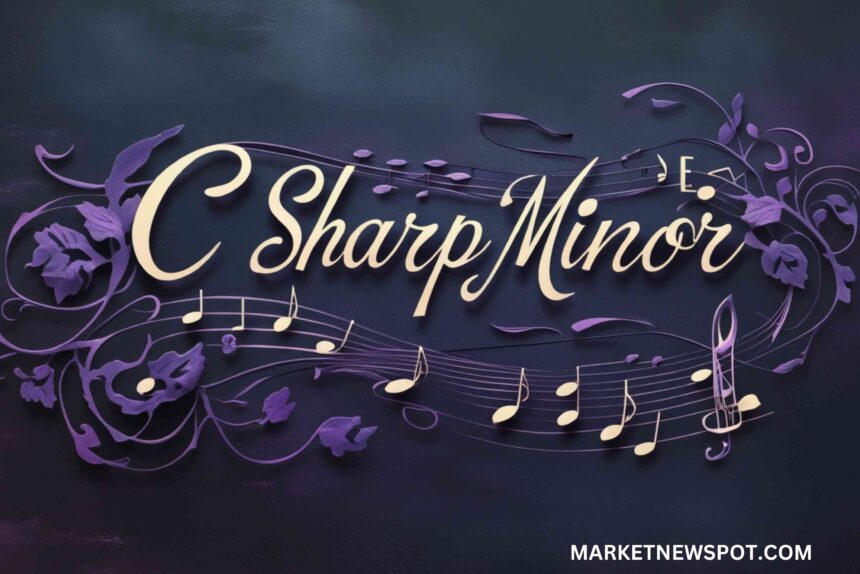Introduction To C Sharp Minor
Ever wondered why some pieces of music instantly evoke deep emotions? C Sharp Minor is one of those keys that can make a song feel dramatic, haunting, and incredibly expressive. But how can you harness its power to create captivating compositions?
In this article, we’ll break down the secrets of composing in C Sharp Minor, offering practical tips to help you craft melodies and harmonies that resonate with listeners. Whether you’re a beginner or a seasoned musician, these techniques will help you make the most of this evocative key.
Understanding the Essence of C Sharp Minor
C Sharp Minor is known for its melancholic and intense character. It’s frequently used in classical, rock, and cinematic music to create a sense of depth and emotion. The key consists of C#, D#, E, F#, G#, A, and B, forming a sound palette that lends itself well to both sorrowful and powerful compositions.
Why Choose C Sharp Minor for Your Composition?
Why do composers gravitate toward this key? Here are some compelling reasons:
- Emotional Depth – It naturally conveys sadness, mystery, and intensity.
- Rich Harmonic Possibilities – The combination of minor and major chords within this key allows for expressive shifts in mood.
- Unique Timbre on Instruments – On the piano and guitar, C Sharp Minor provides a distinct tonal quality that stands out.
Scales and Chord Progressions in C Sharp Minor
Mastering the scales and chords in C Sharp Minor is key to unlocking its full potential. Here’s what you should focus on:
- Natural Minor Scale: C#, D#, E, F#, G#, A, B, C#
- C#, D#, E, F#, G#, A, B#, C#. Harmonic minor scale
- Melodic Minor Scale (Ascending): C#, D#, E, F#, G#, A#, B#, C#
Popular Chord Progressions:
- i – iv – v (C#m – F#m – G#m) – A classic minor progression.
- i – VI – III – VII (C#m – A – E – B) – Common in pop and rock music.
- ii – V – i (D#m7 – G#7 – C#m) – Frequently used in jazz and film scores.
Creating Emotional Melodies in C Sharp Minor
To craft a melody that captivates listeners:
- Use Stepwise Motion – Avoid excessive leaps to maintain a smooth, singable line.
- Incorporate Chromatic Passing Notes – This enhances expressiveness.
- Play with Range and Contour – Start low and gradually ascend to build tension and release.
Harmonic and Melodic Variations

Enhance your composition with these techniques:
- Modulation – Shift to related keys like E Major for contrast.
- Borrowed Chords – Use chords from parallel major (C# Major) to add unexpected color.
- Suspended and Diminished Chords – These add mystery and tension.
Rhythmic Patterns for a Captivating Sound
Rhythm plays a huge role in shaping your composition. Try these approaches:
- Syncopation – Displace strong beats for a more dynamic feel.
- Triplets – Add a flowing, classical touch.
- Ostinato Patterns – Repeating rhythmic motifs create drive and continuity.
Incorporating Dynamics and Articulation
A flat melody can feel lifeless. Breathe life into it with:
- Crescendos and Diminuendos – Gradual volume changes keep listeners engaged.
- Staccato vs. Legato – Short, detached notes contrast beautifully with smooth, connected ones.
- Accents – Highlight key moments for dramatic effect.
Common Mistakes to Avoid
- Overcomplicating the Harmony – Keep it simple and effective.
- Lack of Contrast – Vary sections to prevent monotony.
- Ignoring the Bass Line – A strong bass supports the melody and harmony.
Famous Compositions in C Sharp Minor
Some legendary pieces in this key include:
- Beethoven’s “Moonlight Sonata” (1st Movement)
- Rachmaninoff’s Prelude in C Sharp Minor
- Chopin’s Nocturne in C Sharp Minor
Studying these pieces can provide valuable insights into the use of C Sharp Minor.
Conclusion
C Sharp Minor is a deeply expressive key, ideal for composing music that moves listeners. By understanding its scales, chord progressions, and emotional impact, you can create captivating pieces that leave a lasting impression.
FAQs
- Is C Sharp Minor a difficult key to compose in?
It can be challenging due to its key signature, but with practice, it becomes easier to navigate.
- What genres commonly use C Sharp Minor?
Classical, rock, jazz, and film music frequently utilize this key for its emotional depth.
- How can I make my melodies in C Sharp Minor more interesting?
Use dynamic contrast, rhythmic variation, and expressive articulation to keep melodies engaging.
- Can I modulate to other keys from C Sharp Minor?
Yes! E Major, A Major, and G# Minor are great options for modulation.
- What instruments sound best in C Sharp Minor?
Piano, violin, and electric guitar work particularly well in this key due to their expressive capabilities.









